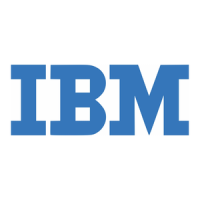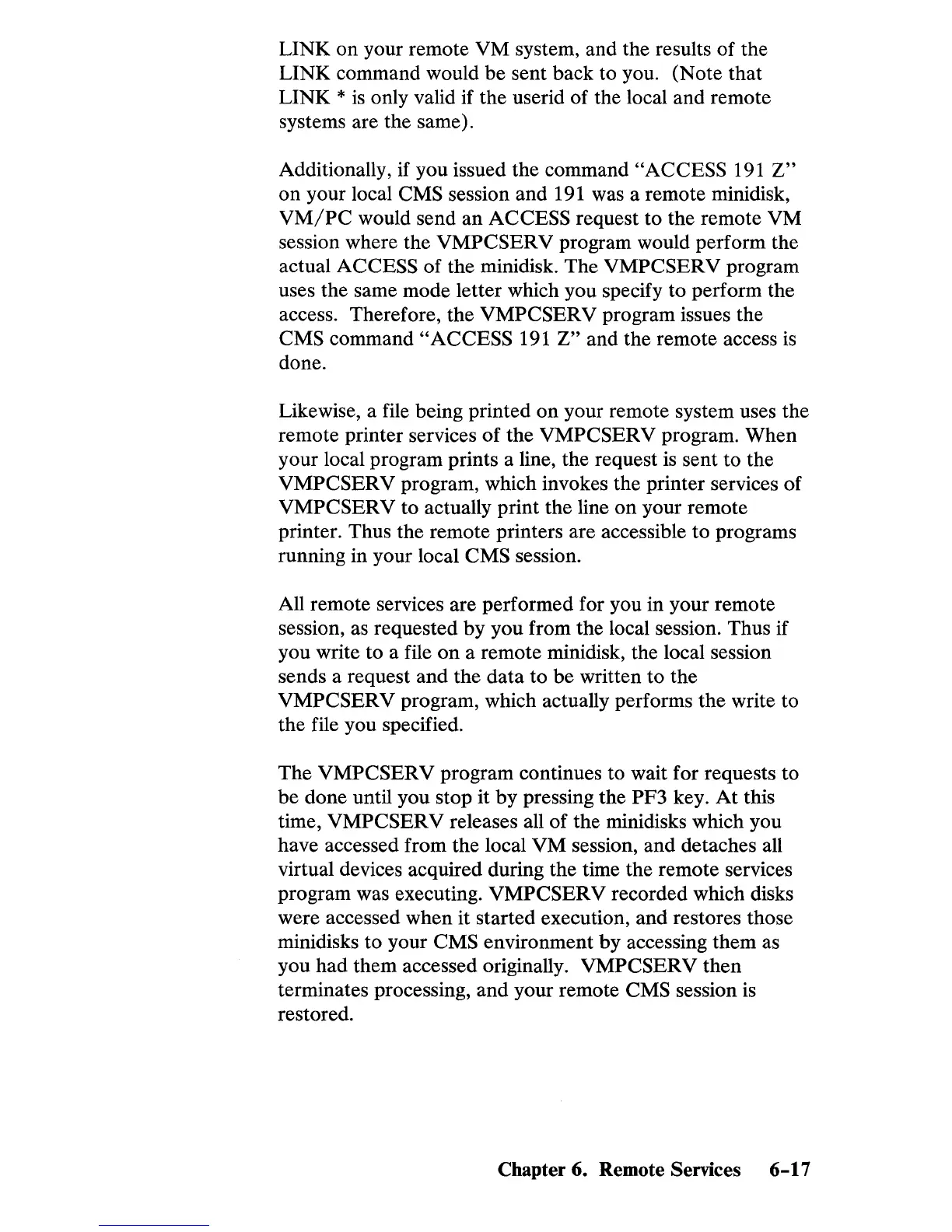LINK
on
your remote
VM
system, and the results
of
the
LINK command would
be
sent back to you. (Note
that
LINK *
is
only valid if the userid of the local and remote
systems are the same).
Additionally, if you issued the command
"ACCESS
191
Z"
on
your local CMS session and 191 was a remote minidisk,
VM/PC
would send
an
ACCESS request to the remote VM
session where the
VMPCSERV
program would perform the
actual ACCESS of the minidisk. The
VMPCSERV
program
uses the same mode letter which you specify
to
perform the
access. Therefore, the
VMPCSERV
program issues the
CMS
command"
ACCESS 191
Z"
and the remote access
is
done.
Likewise, a file being printed
on
your remote system uses the
remote printer services
of
the VMPCSERV program. When
your local program prints a line, the request
is
sent
to
the
VMPCSERV
program, which invokes the printer services
of
VMPCSERV
to actually print the line
on
your remote
printer. Thus the remote printers are accessible
to
programs
running in your local CMS session.
All remote services are performed for you in your remote
session, as requested
by
you from the local session. Thus if
you write
to
a file
on
a remote minidisk, the local session
sends a request and the
data
to
be
written
to
the
VMPCSERV
program, which actually performs the write to
the file you specified.
The
VMPCSERV
program continues to wait for requests
to
be
done until you stop it
by
pressing the PF3 key.
At
this
time,
VMPCSER
V releases all
of
the minidisks which you
have accessed from the local
VM
session, and detaches all
virtual devices acquired during the time the remote services
program was executing.
VMPCSERV
recorded which disks
were accessed when it started execution, and restores those
minidisks
to
your CMS environment
by
accessing them as
you had them accessed originally.
VMPCSERV
then
terminates processing,
and
your remote CMS session
is
restored.
Chapter 6. Remote Services
6-17

